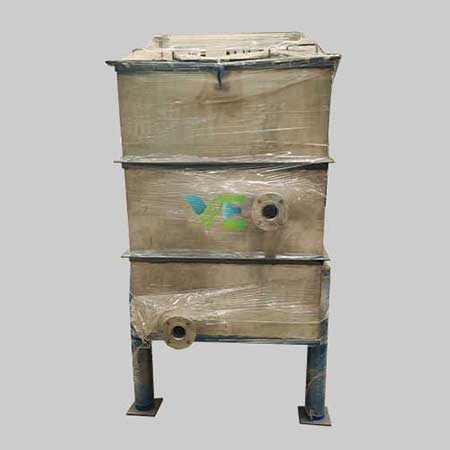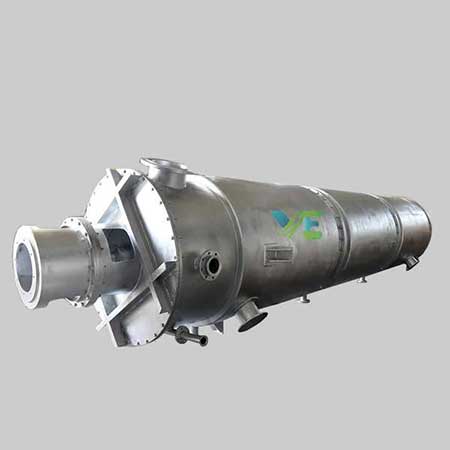Evaporator- Know Everything About It
Evaporator is used to convert liquid to gaseous state by heat transfer. All basic evaporators have a mechanism to separate liquid and vapor by means of heat transfer. The raw material is fed into the evaporator and passes through heated tubes. Heat evaporates the water contained in the material.
Evaporators have diverse applications across industries. These are used in manufacturing processes to concentrate liquids, separate solvents, reduce waste, produce fresh water, recover valuable substances, and create powdered products. Evaporators find use in food production, chemical manufacturing, pharmaceuticals, wastewater treatment, and more.
Working Principle
The evaporator is a component of the refrigeration cycle that absorbs heat from its environment. It works by exchanging heat between the refrigerant and the air or substance to be cooled. The refrigerant absorbs heat causing it to evaporate and change from a low-pressure liquid to a low-pressure gas.
The amount of evaporation that takes place depends on the temperature difference between the vapor and the solution. The evaporator operates opposite the condenser, where the liquid refrigerant is converted to a gas, absorbing heat from the air in compartment.



How it Works?
When the air conditioning system is turned on, warm cabin air is blown through the coils and fins of the evaporator. The evaporator receives the refrigerant from the thermal expansion valve or orifice as a cold atomized liquid at low pressure.
As the cold refrigerant passes through the evaporator coil, heat moves from the warm air to the colder refrigerant. When the liquid refrigerant receives enough heat, a change of state occurs - from a low-pressure liquid to a low-pressure vapor.
The thermal expansion valve or orifice continuously measures the exact amount of refrigerant needed to maintain optimal heat transfer, ensuring that all liquid refrigerants convert to vapor as they reach the appliance outlet. evaporation. The vaporized refrigerant then continues to the inlet (suction) side of the compressor.
Evaporator Types
1. Natural Circulation Evaporator
- Evaporating Pans
- Evaporating Stills
- Short Tube Evaporator
2) Forced Circulation Evaporator
3) Film Evaporator
- Wiped Film Evaporator
- Long Tube Evaporator
- Climbing Film Evaporator
- Falling Film Evaporator
Significance- Why we need an Industrial Evaporator?
Evaporator is important because it allows the ammonia to absorb heat from its surroundings, which is then used to cool the space being cooled. There are several reasons why your facility needs an industrial evaporator to make its processes more efficient.
First, evaporating the ammonia allows it to absorb more heat, making the process more efficient. Second, the evaporation of ammonia helps prevent it from evaporating, which can lead to system failure. Finally, the evaporation of ammonia helps keep the refrigerant cycle clean, reducing the possibility of system failure.
If your facility uses a refrigeration system, it is important to have the evaporator coil working properly. Damaged or defective coils can cause various problems, including: -
- Reduced system performance
- Increased energy costs
- Compressor failure
- Poor quality cold goods
- System error
Choose The Reliable Solution
The efficiency of the evaporator is largely determined by the design and capabilities of the evaporator. Factors such as evaporator construction material, energy efficiency and carbon footprint should be considered when choosing the right evaporator for your application.
Vincitore Solutions strives to provide the exact range you require on these Evaporators. With over decade of experience, we have successfully installed multiple projects and ensure that our designs give customers an edge. Our design process begins with an in-depth study of customer processes and requirements, and evaporative solutions are designed using advanced analysis with latest technology.
